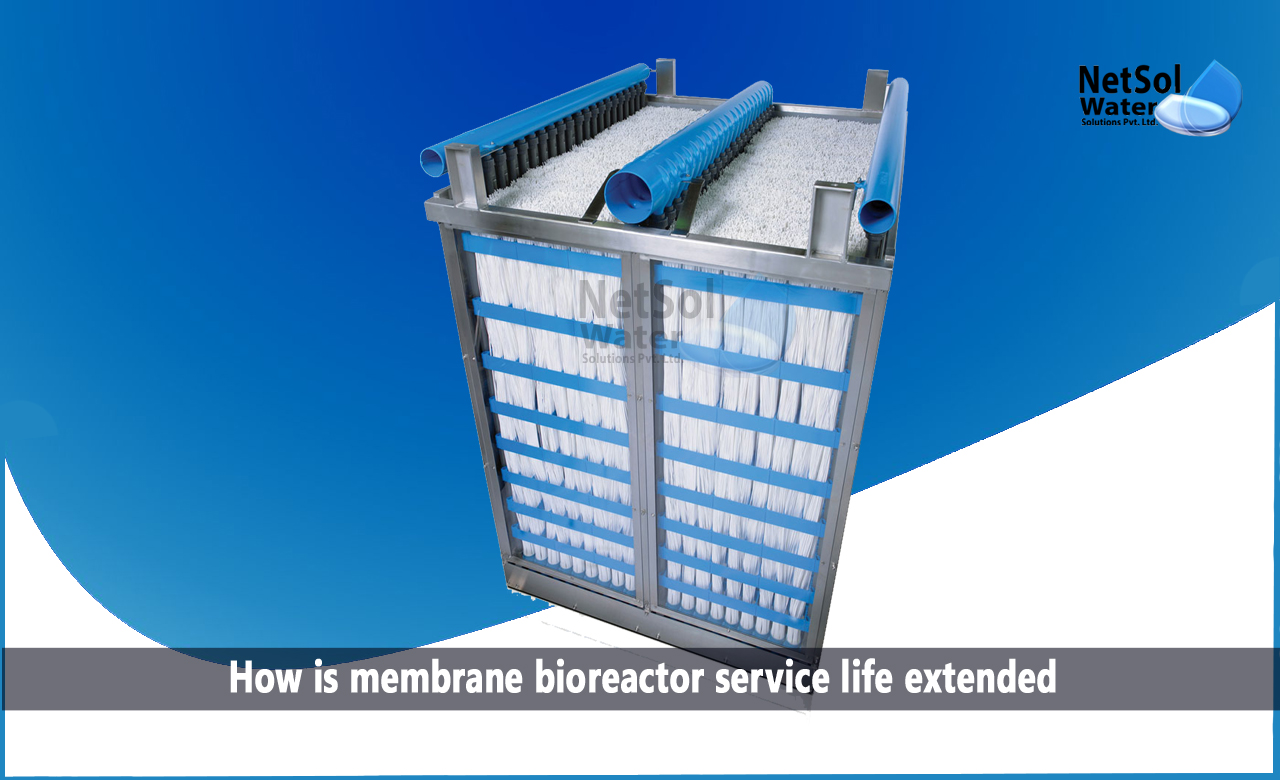In Membrane bioreactor, MBR design, process flow, and equipment operation are taken into account, in accordance with the characteristics of membrane materials and membrane separation, to reduce concentration polarisation and membrane fouling to a low level, as well as to make MBR run effectively while extending its service life, and lowering filtration cost.
How is membrane bioreactor’s service life extended?
Here are some techniques to make MBR last longer:
· Effective material liquid pretreatment
Improve the water quality of the membrane module input water by performing efficient pretreatment, on the feed liquid (raw material). Adopting strategies like pre-flocculation, pre-filtration, or altering the pH of the solution, to get rid of some solutes that could interact with the membrane.
To increase the MBR's service life, keep the sludge concentration in the influent water below 10,000 mg/l, the pH level between 5 and 9, and the temperature between 5 and 45 degrees Celsius.
· Enhanced membrane materials and MBR membrane optimizatio
The rate of membrane fouling is somewhat influenced by the membrane material, pore size, and hydrophobicity of the membrane surface. Polypropylene resin, polyvinylidene fluoride, polyolefin, etc. are typical membrane materials utilized in MBR.
The tightness, length, and diameter of the membrane filaments in membrane modules, also have an effect on how well the membrane filters water. Consequently, optimised membrane design is also successful to extend the service life of MBR.
· Operation under critical membrane flux control
In constant flux filtration, the term "critical flux" describes the occurrence of a critical value, under particular operating circumstances. The transmembrane pressure rises quickly and membrane fouling develops quickly, when the membrane flux exceeds this value.
Membrane fouling develops very slowly when the membrane flux is less than this amount. The hydraulic operating conditions, the mode of membrane separation, the characteristics of the feed liquid, and the inherent membrane properties all affect the critical membrane flux.
· Intermittent operation
The intermittent suction mode of operation in the submerged MBR Membrane Modules is intended, to halt membrane filtration on a regular basis, resulting in zero net flow from the liquid to the membrane surface. The membrane's filtration ability is then partially restored when the sludge that had been accumulated, on the surface of the membrane is relaxed by the action of aeration bubbling.
More contaminants will gather on the membrane surface as the suction process continues. The more irreversible contaminants on the membrane surface that are removed, the better the recovery of membrane filtration performance will be the longer, the suction is stopped.
· Improved backwash and aeration
Improved aeration can lessen the number of organisms that accumulate on the membrane surface. Backwashing may effectively reduce membrane pollution, extend the usage of MBR, and lower the cost of filtration.
It can also prevent obstruction brought on by soluble compounds entering the membrane pores, and irreversible contamination of the gel layer on the membrane surface.
· Properly position membrane modules
In order to ensure that water flows vertically upward from the bottom of the pool, and that the membrane's surface is evenly in contact with the water flow, the membrane module's placement should take into account its distance from the aeration tank's wall, its distance from the air diffuser, its distance from the liquid level of the reactor, and its distance from the liquid level of reactor.
How can we assist?
MBR technology is being used more and more frequently. It has a small footprint, stable effluent quality, good nitrification and denitrification effects, high nitrogen removal efficiency, and high solid-liquid separation efficiency.
As a result, the MBR process is applied broadly in a growing number of fields. Following the MBR tank's treatment of the wastewater, the effluent can either be discharged directly or after treatment, in accordance with wastewater discharge standards, or it can be reused depending on its actual situation through a series of water treatment processes, including microfiltration, ultrafiltration, nanofiltration, or reverse osmosis.
To learn more about MBR Technology, you can reach Netsol Water, a manufacturer of high quality water and wastewater treatment plants, via phone at +91 9650608473 or drop a mail at enquiry@netsolwater.com



